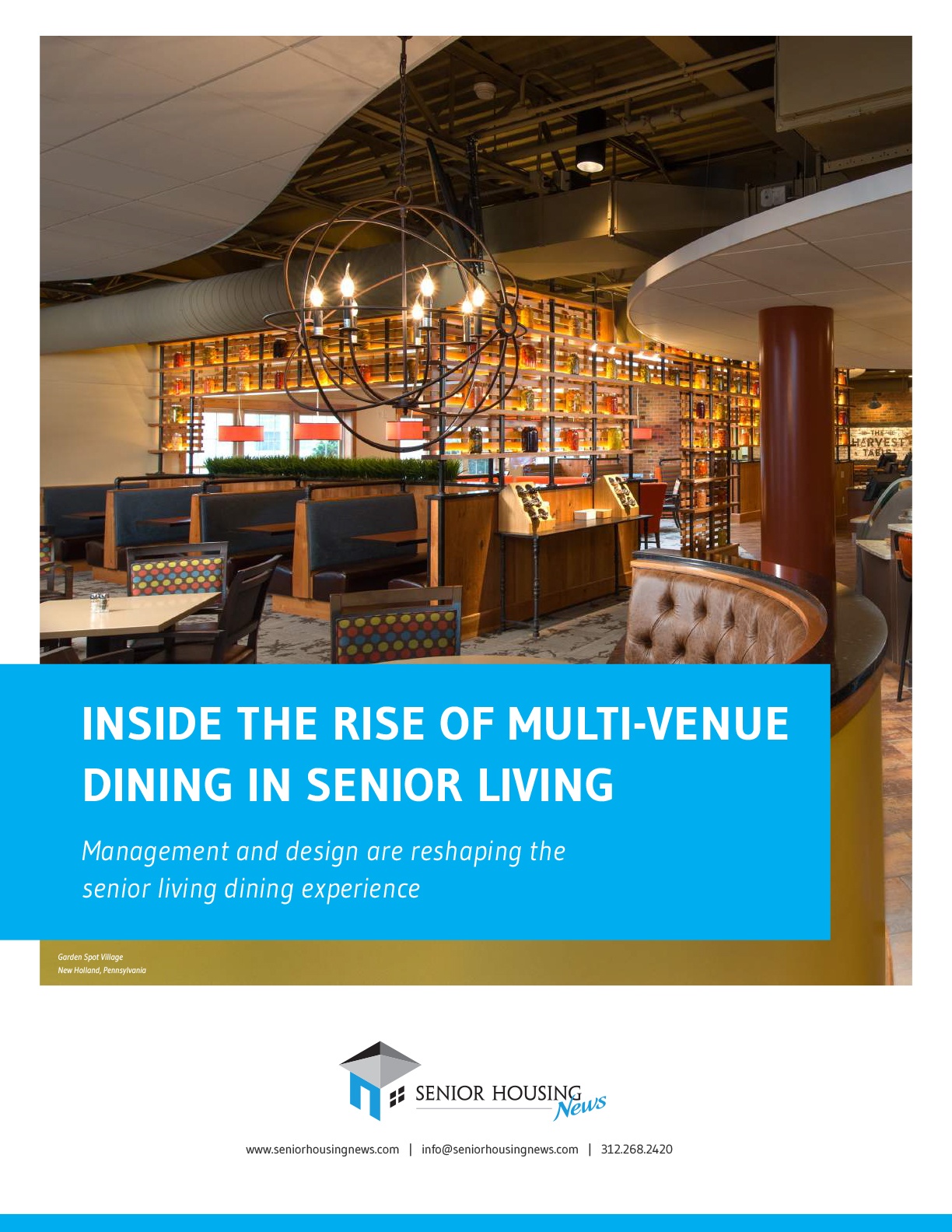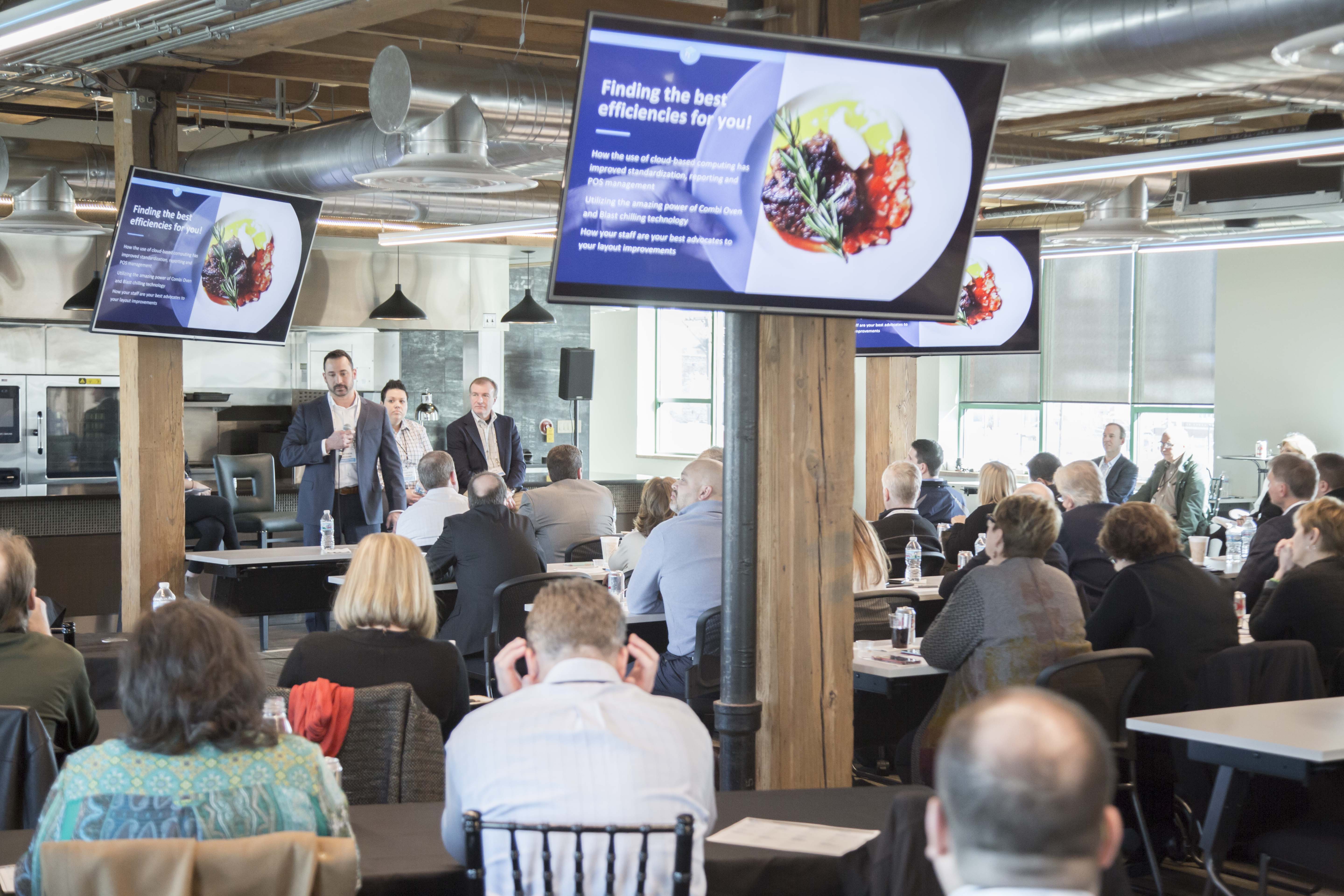As senior living providers grow their ownership or operational portfolios at a steady clip, many are suddenly finding themselves in charge of multiple dining venues across senior living communities scattered throughout the country. With so many moving parts, and many diverse older adults to please, operating those restaurants can be a newfound challenge.
But there are some companies that do it well—like the three represented at Senior Housing News’ Dished event in Chicago last month. Here are some of the insights that Oakmont Management Group, Emerald Communities and Garden Spot Communities shared:
1. Consistency is key
When Oakmont Management Group, a California-based senior living resort developer and management company with 24 communities, hired former Food Network contestant and chef Rina Younan as its senior regional director of culinary, she arrived with a mission: to change the way people felt about food in senior living.
Today, she’s working toward that goal by helping the provider maintain quality across its venues as it aims to grow to 50 communities in the years ahead.
“I’m coming from the approach of… how do we offer farm-to-fork-style dining with a lot of autonomy, but still have it be consistent?” Younan asked. “That’s what will make or break a senior living experience.”
Balancing consistency and autonomy in a senior living community’s dining program can be easier said than done, however, which is why Younan suggested focusing on three main areas: food, service and branding.
For consistency in food, Oakmont buys many of its ingredients through a group purchasing organization (GPO), which has helped it standardize its vendors and ingredients. It also implemented recipes that were easy to replicate across all of its dining venues, and established best practices for presenting those menu items.
Younan compared the ideal senior living dining experience to the kind of service you might find at Disneyland, where everything—from the uniforms to the greetings—are pre-determined before guests arrive. She recommended doing the same in any senior living eatery.
“Disney has scripted the experience for the guests so you leave with a consistent experience each time,” she explained. “We’ve taken those same concepts and applied them to our restaurants.”
Finally, it’s important to brand a dining venue properly and consistently, Younan said. Core values, a mission, standardized training tools and frequent feedback from residents can help providers achieve their desired brand perception among older adults.
2. Technology helps with efficiency
But consistency is just one piece of the puzzle. Senior living restauranteurs must also keep things running efficiently—and that’s where technology comes in, according to Matthew Lecours, director of culinary services for Emerald Communities, a nonprofit based in Gig Harbor, Washington.
For Emerald, some of those efficiencies come from back-end processes such as cloud-based computing and standardized reporting in point of sale (POS) management. Though Emerald Communities uses that kind of technology now, there was a more difficult time when it didn’t, Lecours recalled.
“None of the softwares talked to each other. You had about 15 different softwares to do one thing,” he said. “It was so frustrating.”
These days, the provider uses MatrixCare to streamline and manage POS processes at its continuing care retirement communities (CCRCs). Using that software, employees anywhere in the company can view real-time culinary data or even build recipes using ingredients the company knows it has on the shelf.
“It will cost the recipe for you and even deliver the nutritional analysis,” Lecours said. “You can also input the resident’s dietary restrictions and build… individual menu cards that automatically kick out [foods a resident doesn’t eat].”
Emerald Communities also implements kitchen display systems and Wi-Fi enabled tableside ordering platforms to ensure residents get their food in a timely manner. In the kitchen, top-of-the-line Combi ovens paired with professional-grade blast chillers help save time—and even money.
“Who wants to buy an oven that costs as much as a Kia? I do,” Lecours said. “For the pieces of equipment you can replace with this technology, it’s astronomical. You will never have to clean that thing again.”
3. Create an experience
When Garden Spot Village, a CCRC with slightly less than 1,000 residents in New Holland, Pennsylvania, opened a fast casual restaurant called The Harvest Table about three years ago, company CEO Steve Lindsey knew he had created something special.
“It used to be just one big open room with lots of tables crowded together,” Lindsey said. “Now, families come for a night out, for a meal.”
Lindsey drew inspiration from a concept that New York City restauranteur Danny Meyer taught him: great restaurants take diners somewhere new and different, tell a story and make customers part of that story. In the case of The Harvest Table, diners are reminded of surrounding Lancaster County’s agricultural roots and Amish communities.
“People want everything they experience… to relate to their own unique identity. We see that especially with baby boomers,” Lindsey explained. “They’re not just trying new things in their demographic area, but they’re listening to their grandkids… and they’re saying, I’d like to try that.”
Meanwhile, demographic boundaries are blurring, meaning senior living providers don’t need to worry so much about providing one specific experience that fits every person.
“When people come to us, they want all those other elements of their life, whether they’ve heard of it or not,” Lindsey added. “We wanted to create a place that not only provided a great meal, not only broke through those demographic barriers… but also a place that creates community.”

That report, available online, examines the top design and management principles that are shaping the high-variety senior living dining experience—such as executive chefs, demonstration kitchens, counter-style seating, ethnic food stations and tablet-based ordering.
Written by Tim Regan
Companies featured in this article:
Emerald Communities, Garden Spot Village, MatrixCare, Oakmont Management Group


